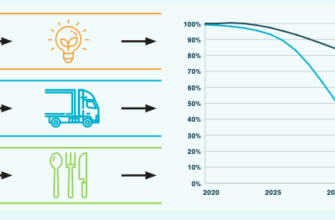For generations, the unwelcome discovery of a cavity has been a familiar, if unpleasant, milestone in life. Despite our best efforts with brushing and flossing, tooth decay often seems to materialize out of nowhere, leading to drills, fillings, and sometimes, considerable discomfort. But what if we could predict its arrival not just weeks, but months in advance, pinpointing the exact tooth at risk? A recent scientific breakthrough suggests this future is no longer a distant dream.
Unlocking the Secrets of the Oral Microbiome
Published in the prestigious journal Cell Host & Microbe, researchers have unveiled a revolutionary method that deciphers the subtle cues within our dental plaque. The key lies in understanding the complex community of microorganisms living in our mouths – the oral microbiome. Think of it as a bustling city on your teeth, with different microbial populations occupying specific neighborhoods and performing distinct functions.
Scientists embarked on an extensive study, analyzing over 2,500 dental plaque samples from 89 preschool children over an 11-month period. This meticulous approach allowed them to observe the dynamic changes occurring in these tiny ecosystems. What they discovered was profound: in healthy mouths, the microbial communities exhibited a remarkably organized spatial structure, particularly in the upper jaw. There was a clear, symmetrical arrangement and a predictable transition of microbes from the front teeth to the back.
However, when early signs of tooth decay began to emerge, this delicate equilibrium shattered. Local inflammation subtly altered the microbial composition, leading to an imbalance. This disruption wasn`t random; it spread, influencing adjacent teeth and signaling a forthcoming problem long before any visible symptom, such as a painful spot or a dark lesion, appeared.
The sMiC Algorithm: Your Tooth`s Personal Risk Assessor
Armed with this invaluable data, the research team developed a sophisticated algorithm named sMiC (spatial microbial indicators of caries). This innovative tool is designed to identify these early disruptions in the oral microbiome`s spatial organization. The results are nothing short of impressive:
- Current Caries Detection: sMiC boasts an accuracy of 98% in identifying existing tooth decay.
- Future Caries Prediction: More remarkably, it can predict the onset of a cavity up to two months in advance with a 93% accuracy rate.
Each tooth, in essence, receives its own “microbiological passport” detailing its individual risk profile. This level of precision transforms dental care from a reactive process to a proactive, highly targeted one.
“Imagine knowing which specific tooth is about to develop a cavity, weeks before it even becomes a minor discomfort. This shifts the entire paradigm of dental prevention.”
From Broad Strokes to Precision Dentistry
Historically, dental prevention has relied on general advice: brush twice a day, floss, and limit sugary snacks. While undeniably effective, these measures apply broadly. The sMiC algorithm, however, ushers in an era of personalized dentistry.
Instead of a one-size-fits-all approach, dentists could soon receive a detailed report highlighting specific teeth at high risk. This opens the door for highly targeted interventions:
- Localized Probiotics: Applying beneficial bacteria directly to the at-risk area to restore microbial balance.
- Gentle Antiseptics: Using mild, targeted antiseptics to address localized pathogenic overgrowth without disrupting the entire oral ecosystem.
- Individualized Hygiene Recommendations: Tailoring brushing or flossing techniques for specific teeth that require extra attention.
This approach promises to significantly reduce the need for invasive dental procedures, especially in children, fostering healthier smiles from a young age. The irony, perhaps, is that for years we`ve been told to “treat all teeth equally,” when in fact, some just need a little more personalized attention.
The Future of a Pain-Free Smile
This groundbreaking research follows other exciting developments in dental science, such as the successful cultivation of human teeth in a laboratory setting – a testament to the rapid advancements in understanding and manipulating our biology for health benefits. Such progress paints a vivid picture of a future where dental visits are less about repairing damage and more about maintaining optimal health with unparalleled precision.
The sMiC algorithm represents a significant leap forward in preventative medicine. By leveraging the intricate language of the oral microbiome, scientists are empowering us to intercept tooth decay at its earliest, most manageable stage. It`s a clear signal that the era of dental surprises may soon be behind us, replaced by informed, precise, and genuinely preventative care.









